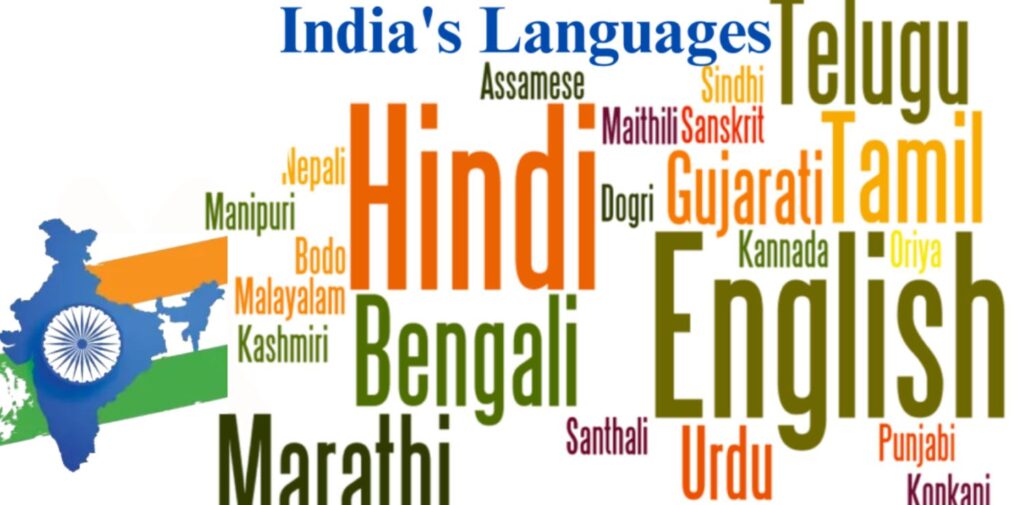India is a land of incredible diversity, and one of its most vibrant aspects is its languages. With over 122 major languages and more than 1,600 dialects, India’s linguistic tapestry is as colourful as its culture. This article will explore the importance of preserving and promoting this rich linguistic heritage, highlighting the efforts being made to ensure that languages continue to thrive in a rapidly changing world.
The Rich Linguistic Landscape of India
India’s linguistic diversity is a treasure trove of cultural identity. Major languages include Hindi, Bengali, Telugu, Marathi, Tamil, Urdu, and Gujarati, among others. Each language carries its unique history, literature, and traditions. For example, Hindi is not only the most widely spoken language but also serves as a bridge between different cultures in northern India. Tamil, on the other hand, is one of the oldest languages in the world, with a rich literary history spanning over 2,000 years.
This linguistic variety contributes significantly to India’s identity. Each language reflects the lifestyle, values, and beliefs of the communities that speak it. By understanding these languages, we gain insight into the diverse ways of life that coexist in this vast country.

Importance of Language Preservation
Language is more than just a means of communication; it is a repository of culture and history. When a language disappears, a unique worldview and cultural heritage are lost forever. The extinction of languages can lead to the erosion of traditions, stories, and practices that have been passed down through generations.
Preserving languages is essential for maintaining the cultural diversity that India is known for. Each language offers different perspectives on life and enriches our collective knowledge. Additionally, language preservation is crucial for fostering social cohesion among different communities. When people can communicate in their mother tongue, it strengthens their sense of belonging and identity.

Current Threats to Language Diversity
Despite its rich linguistic heritage, India faces significant challenges in preserving its languages. Urbanization, globalization, and the dominance of major languages like Hindi and English pose serious threats to many regional and tribal languages. Children in urban areas often learn Hindi or English in school, leading to a decline in the use of their native languages at home.
Moreover, social media and digital platforms often favour dominant languages, making it difficult for lesser-known languages to thrive in the digital age. Many speakers of regional languages feel pressured to adopt more widely spoken languages to gain better job opportunities and social mobility. This trend risks pushing many languages towards extinction.
Efforts to Preserve and Promote Languages
Recognizing the importance of preserving linguistic diversity, various initiatives and programs have been launched across the country. These efforts aim to promote awareness and encourage the use of regional languages.
Government Initiatives
The Indian government has implemented several language policies to support the preservation of linguistic diversity. The Eighth Schedule of the Indian Constitution recognizes 22 languages, promoting their use in education, administration, and media. This official recognition encourages people to take pride in their languages and promotes their usage in public life.
Additionally, the National Education Policy (NEP) emphasizes the importance of mother-tongue education, especially in the early years of schooling. This approach not only helps children learn better but also instils a sense of pride in their linguistic heritage.
Cultural Organizations and NGOs
Numerous cultural organizations and non-governmental organizations (NGOs) work tirelessly to promote regional languages and cultures. They conduct workshops, organize language festivals, and publish literature in various languages. For example, the Sahitya Akademi supports writers in different languages and promotes literature through awards and grants.
Organizations like the Linguistic Minorities Forum focus on safeguarding the rights of speakers of minority languages. They advocate for policy changes that promote multilingualism and protect linguistic rights.
Community Efforts
Community-driven initiatives play a vital role in language preservation. Many local groups organize language classes, storytelling sessions, and cultural events to encourage the use of their native languages. These grassroots efforts help create a sense of community and ensure that younger generations learn and appreciate their linguistic heritage.
In some regions, folk arts and traditional practices are revived to reinforce language usage. For example, local theatre and music performances often incorporate native languages, making them more appealing and relatable to younger audiences.

The Role of Technology
Technology can also be a powerful tool for promoting and preserving languages. Digital platforms provide opportunities for speakers of minority languages to share their stories and connect with a broader audience. Social media, blogs, and podcasts in regional languages are gaining popularity, creating a vibrant online presence for these languages.
Moreover, language learning apps and websites have started offering courses in various Indian languages. This trend not only makes learning accessible but also allows people from different linguistic backgrounds to engage with each other.
Language in Education
Educational institutions are increasingly recognizing the importance of multilingual education. Many universities and colleges offer courses in regional languages, encouraging students to explore their linguistic roots. Bilingual education programs also help children become proficient in their mother tongues while learning other languages.
The promotion of literature in regional languages through academic curricula is another significant step. This approach not only introduces students to rich literary traditions but also instils respect for linguistic diversity.
Challenges Ahead
Despite the positive efforts, challenges remain. One of the biggest hurdles is the societal perception of regional languages. Many people still view them as inferior to dominant languages, leading to a lack of motivation to learn and use them. Changing this mindset is crucial for the success of preservation efforts.
Additionally, resource allocation for language promotion needs to be improved. Many regional languages lack proper documentation, educational materials, and media representation. Increased funding and support from both the government and private sectors are essential to address these gaps.
Conclusion: India Diverse Languages
India’s linguistic diversity is a remarkable aspect of its cultural identity, reflecting the richness and complexity of its heritage. Preserving and promoting this diversity is not just about saving languages; it’s about protecting cultures, traditions, and identities. Through government initiatives, community efforts, and the power of technology, there is hope for the survival of many of India’s languages.
As we move forward, it is essential to embrace and celebrate this linguistic diversity, recognizing its value in fostering unity and understanding among different communities. By valuing our languages, we can create a more inclusive society that respects and cherishes the unique contributions of every culture. In doing so, we ensure that the vibrant tapestry of India’s languages continues to thrive for generations to come.




